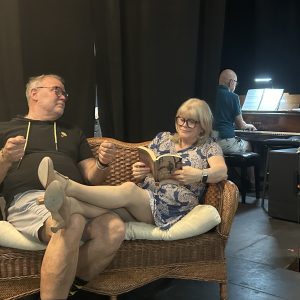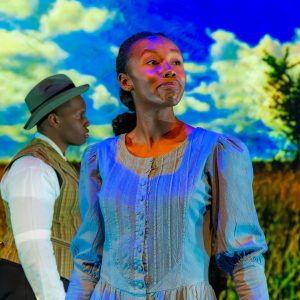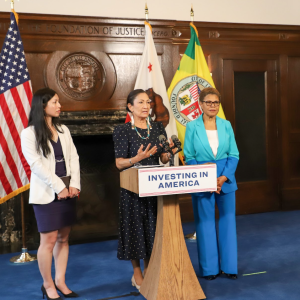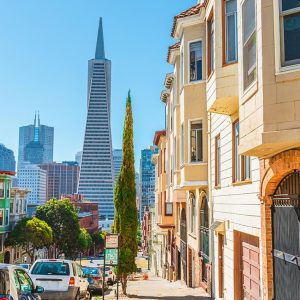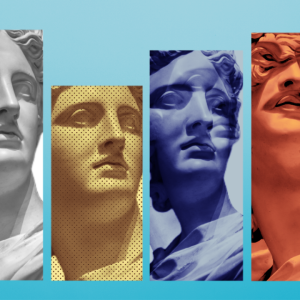 View Winners →
View Winners → The Big Boy on the Block: The Huntington and the Little Guys

The Huntington was founded by Henry Edwards Huntington in 1919 as his own home and the museum and gardens were opened to the public in 1928. It is now a private, nonprofit institution is supported by gifts from individuals, corporations, foundations, and government agencies, and by a private endowment that provides about 30 percent of the institution’s annual operating budget.
The Rose Hills Foundation Conservatory for Botanical Science opened in fall 2005 and was designed to interest students and their families in learning about plants, ecosystems, and biodiversity. The ecosystems include a lowland tropical rain forest, a cloud forest, and a carnivorous plant bog (somehow the little boys seem to like the bog best.) There are interactive exhibits are designed to engage youngsters in hands-on experiments, using scientific instruments and living plants to explore the natural world around them. The exhibits were designed principally for students aged 9 to 12, but I enjoy wandering through and learning new things as well. Next to the conservatory is the Helen and Peter Bing Children’s Garden, a one acre garden with interactive activities for youngsters.
Perhaps the most respected aspect of the complex is the Library itself. It has more than 6 million manuscripts, books, photographs and other works in the fields of American and British history, literature, art, and the history of science, medicine, and technology. Most of these are for the use of scholars, but about 300 of these items are on public display. Perhaps one of the most famous items is a copy of the Gutenberg Bible (ca. 1455). There are also world-class collections of early editions of Shakespeare, original letters of Washington, Jefferson, Franklin, and Lincoln and an amazing collection of materials relating to the history of the American West. There are several permanent exhibits and a regular series of changing exhibits. Check the Huntington’s web site for current exhibits.
When I was little this was not my favorite area.
Don’t miss the Dibner Hall of the History of Science which opened in November of 2008. This relatively new, permanent exhibit studies the history of science. The exhibit features the scientific ideas that changed the world in the fields of astronomy, natural history, medicine, and light. It may be of greater interest to slightly older children.
The heart of the Art Collection is housed in the original mansion which was built for Henry and Arabella Huntington in 1911. Here are some of the stars of the show and the most famous paintings in the collection: Gainsborough’s Blue Boy, Lawrence’s Pinkie, Reynolds’ Sarah Siddons as the Tragic Muse. Rogier van der Weyden’s 15th-century masterpiece Madonna and Child is said to be the most important painting at The Huntington,. but I am partial to Mrs. Siddons having writing a major paper in college about the painting. The mansion was restored and reopened in May of 2008.
 The Virginia Steele Scott Galleries of American Art was just reopened in May of this year and houses American paintings, sculpture, and decorative arts, including works by Mary Cassatt, John Singer Sargent, Frederick Remington, Gilbert Stuart, Edward Hopper, and Robert Motherwell. Perhaps my favorite part of the Scott Galleries is the Dorothy Collins Brown Wing which features the work of famous craftsman artists, architects and designers Charles and Henry Greene, but I am a craftsman buff. There are also changing exhibitions in the MaryLou and George Boone Gallery, a historic building which was originally Henry and Arabella Huntington’s garage.
The Virginia Steele Scott Galleries of American Art was just reopened in May of this year and houses American paintings, sculpture, and decorative arts, including works by Mary Cassatt, John Singer Sargent, Frederick Remington, Gilbert Stuart, Edward Hopper, and Robert Motherwell. Perhaps my favorite part of the Scott Galleries is the Dorothy Collins Brown Wing which features the work of famous craftsman artists, architects and designers Charles and Henry Greene, but I am a craftsman buff. There are also changing exhibitions in the MaryLou and George Boone Gallery, a historic building which was originally Henry and Arabella Huntington’s garage.
The Botanical Gardens are actually more than a dozen different garden areas. When I was little my favorite was the Japanese Garden with its 19th Century completely furnished Japanese house and moon bridge over the Koi Pond.
My Mother was partial to the Camellia Garden while Papa preferred the Jungle, Palm and Desert Gardens.
Eventually I also came to appreciate the Shakespeare and Rose Gardens.
The newest is a Chinese Garden called the Garden of Flowing Fragrance, Liu Fang Yuan and it is California’s first public Chinese Garden. This calming, restful garden has a lake, bridges, pavilions, and a teahouse. These were built by artisans from China who came here specifically to work on the project and many of the plants here are native to China. The first phase of the garden opened in February of last year. with only 3.5 acres of the planned 12 acre site completed. Phase II is under development.
From Memorial Day (May 25) to Labor Day (Sept. 7) The Huntington observes summer hours and is open from 10:30 a.m. – 4:30 p.m. Wednesday through Monday, closed Tuesdays. (After Labor Day, regular hours are Monday, Wednesday, Thursday, Friday: 12 noon – 4:30 p.m., Sat. – Sun.: 10:30 a.m. – 4:30 p.m.)
Parking is free at The Huntington
Adults Weekdays $15 Weekends & Monday Holidays $20
Seniors (age 65+) Weekdays $12 Weekends and Monday Holidays $15
Students (age 12-18,or with full-time student I.D.) $10
Youth (age 5-11) $6
Children (under 5) free
Admission to The Huntington is free to all visitors on the first Thursday of every month with advance tickets which are available on the museum’s web site: www.huntington.org
And then there are the little guys: the local museums. There is no fees for entry, but donations are always appreciated.
In Monrovia, there are two, the Monrovia Historical Museum which is located at 742 E. Lemon in Recreation Park. This features one wing tracing parts of the history of Monrovia and an interactive, child friendly Police exhibit along with a large collection of annuals from Monrovia High School some dating back to its days as Monrovia Arcadia Duarte High. The other wing has a eclectic group of exhibits including dolls, natural history items, Native American art and a military room. It is open on Thursdays and Sundays from 1 to 4 pm.
There is also the Anderson House which is a Victorian farm house still in its original location. It is furnished in artifacts from the period and shows how life might have been lived when Monrovia was founded. It is located at 215 E. Lime just across the street from the City Hall Annex and is open by appointment by calling (626) 358-6192.
Duarte also has an historical museum which focuses more on the history of that City and Bradbury. It is open on Saturdays from 1 to 4 pm and on the 1st and 3rd Wednesdays of each month from 1 to 3 pm. It is located at 777 Enchanto Parkway in Duarte.
The Ruth and Charles Gilb Arcadia Historical Museum houses a permanent chronological exhibit of the history of Arcadia as well an exhibit on the veterans of Arcadia which changes every few months. The there are also changing exhibits such as the Brush Painting and Calligraphy of Master Tam which opens this Saturday. The museum is located at 380 West Huntington Drive in that city. It is open Tuesday through Saturday from 10 am to 4 pm
By Susan Motander




















